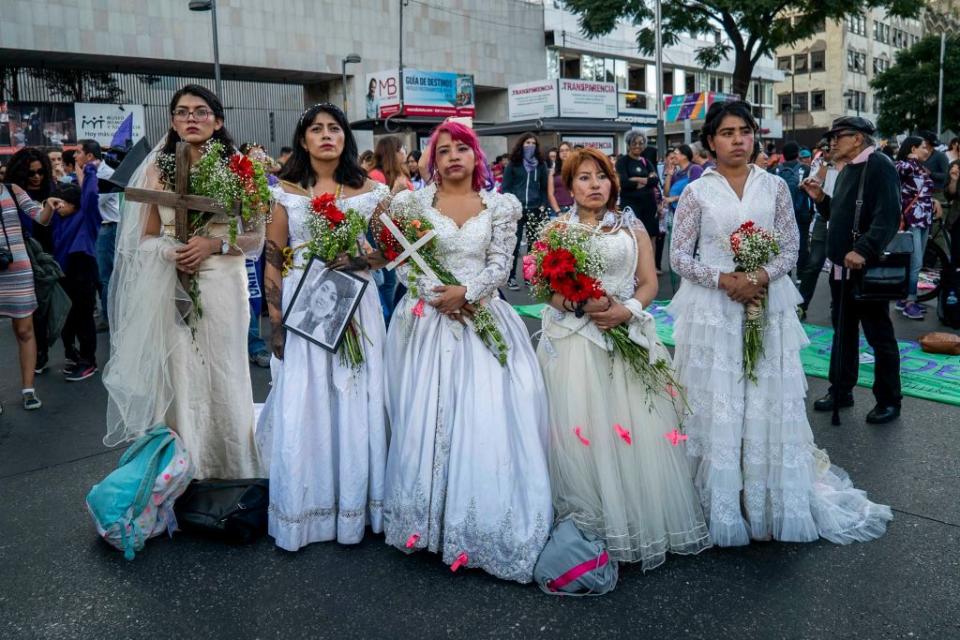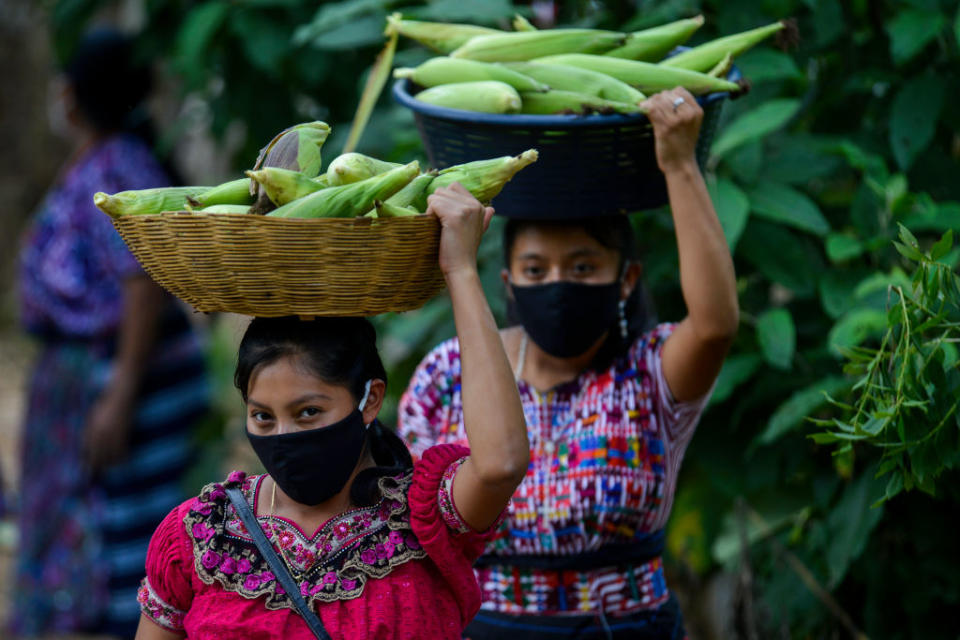'Women are disappearing': Continent's secret coronavirus shame
It’s a pandemic within the pandemic. Across Latin America, gender-based violence has spiked since COVID-19 broke out.
Almost 1,200 women disappeared in Peru between March 11 and June 30, the Ministry of Women reported. In Brazil, 143 women in 12 states were murdered in March and April – a 22 per cent increase over the same period in 2019.
Reports of rape, murder and domestic violence are also way up in Mexico. In Guatemala, they’re down significantly – a likely sign that women are too afraid to call the police on the partners they’re locked down with.
The pandemic worsened but did not create this problem: Latin America has long been among the world’s deadliest places to be a woman.

Don’t blame ‘machismo’
I have spent three decades studying gendered violence as well as women’s organising in Latin America, an increasingly vocal and potent social force.
Though patriarchy is part of the problem, Latin America’s gender violence cannot simply be attributed to “machismo.” Nor is gender inequality particularly extreme there. Education levels among Latin American women and girls have been rising for decades and many countries have quotas for women to hold political office. Several have elected women presidents.
Research, which often centres on Indigenous communities, traces violence against women in Latin America instead to both the region’s colonial history and to a complex web of social, racial, gender and economic inequalities.


I’ll use Guatemala, a country I know well, as a case study to unravel this thread. But we could engage in a similar exercise with other Latin American countries or the US, where violence against women is a pervasive, historically rooted problem, too – and one that disproportionately affects women of colour.
In Guatemala, where 600 to 700 women are killed every year, gendered violence has deep roots. Mass rape carried out during massacres was a tool of systematic, generalised terror during the country’s 36-year civil war, when citizens and armed insurgencies rose up against the government. The war, which ended in 1996, killed over 200,000 Guatemalans.
Mass rape has been used as a weapon of war in many conflicts. In Guatemala, government forces targeted Indigenous women. While Guatemala’s Indigenous population is between 44 per cent and 60 per cent Indigenous, based on the census and other demographic data, about 90 per cent of the over 100,000 women raped during the war were Indigenous Mayans.

Testimonies from the war demonstrate that soldiers saw Indigenous women as having little humanity. They knew Mayan women could be raped, killed and mutilated with impunity. This is a legacy of Spanish colonialism. Starting in the 16th century, Indigenous peoples and Afro-descendants across the Americas were enslaved or compelled into forced labor by the Spanish, treated as private property, often brutally.
Some Black and Indigenous women actually tried to fight their ill treatment in court during the colonial period, but they had fewer legal rights than white Spanish conquerors and their descendants. The subjugation and marginalisation of Black and Indigenous Latin Americans continues into the present day.
How to protect women
Latin American countries have made many creative, serious efforts to protect women.
Seventeen have passed laws making feminicide – the intentional killing of women or girls because they are female – its own crime separate from homicide, with long mandatory prison sentences to try to deter this. Many countries have also created women-only police stations , produced statistical data on feminicide, improved reporting avenues for gendered violence and funded more women’s shelters.

All these efforts to protect women – whether in Guatemala, elsewhere in Latin America or the US – are narrow and legalistic. They make feminicide one crime, physical assault a different crime, and rape another – and attempt to indict and punish men for those acts.
But they fail to indict the broader systems that perpetuate these problems, like social, racial, and economic inequalities, family relationships and social mores.
Some Indigenous women’s groups say gendered violence is a collective problem that needs collective solutions.
Some Mexican Indigenous communities have autonomous police and justice systems, which use discussion and mediation to reach a verdict and emphasise reconciliation over punishment. Sentences of community service – whether construction, digging drainage or other manual labor – serve to both punish and socially reintegrate offenders. Terms range from a few weeks for simple theft to eight years for murder.
Stopping gendered violence in Latin America, the US or anywhere will be a complicated, long-term process.
The necessity of the process has been hastened by the pandemic and the lockdown that has proven deadly for many women. However grand social progress seems unlikely in a pandemic. But when lockdowns end, restorative justice seems like a good way to start helping women who didn’t make it out.
The author of this article is Lynn Marie Stephen, Distinguished Professor of Anthropology, Graduate Faculty Indigenous, Race, and Ethnic Studies at the University of Oregon.
This article is republished from The Conversation under a Creative Commons licence. Read Latin American women are disappearing and dying under lockdown in full at The Conversation.



